Animal lovers find ways to cope with allergies
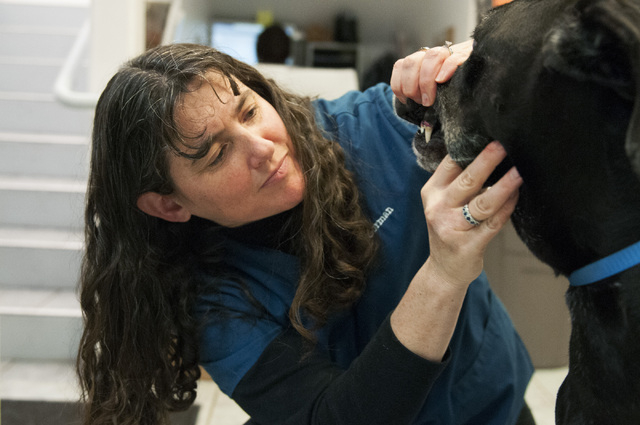
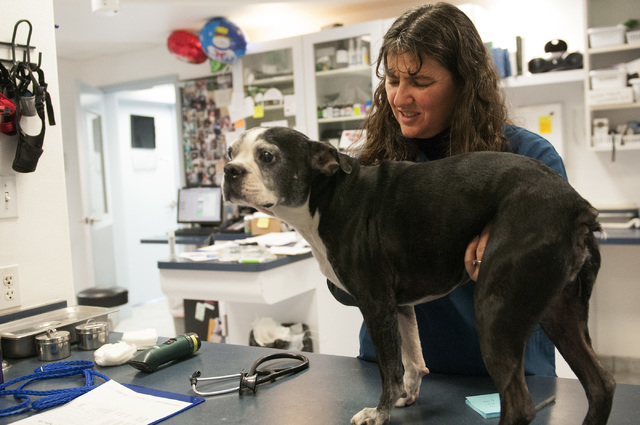
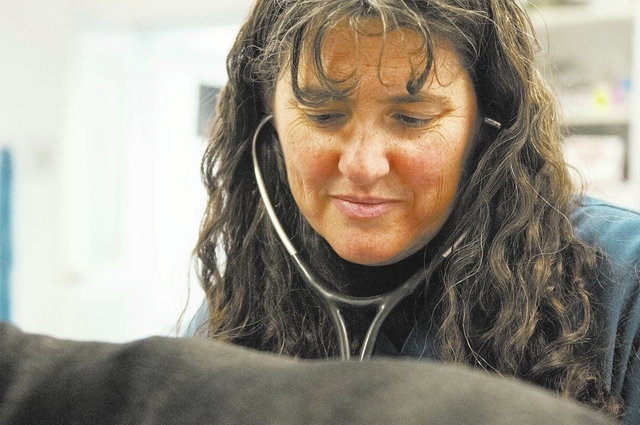
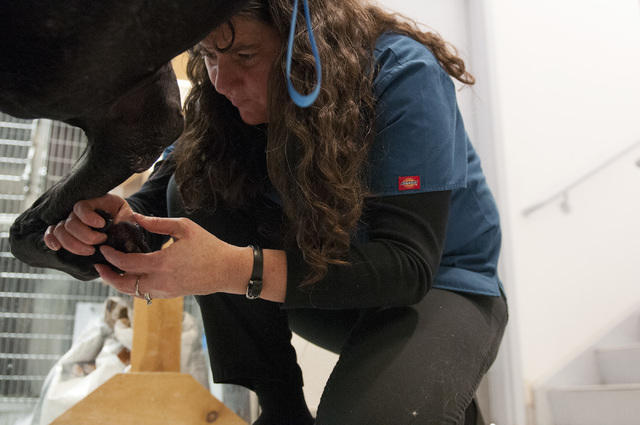
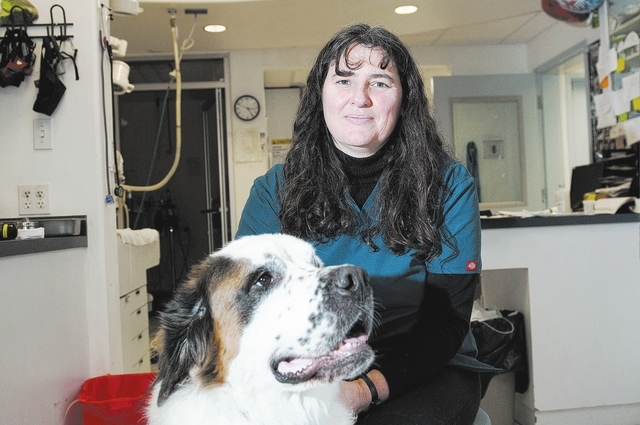
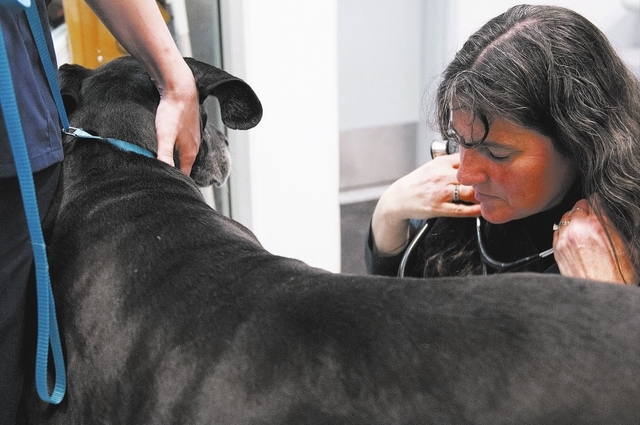
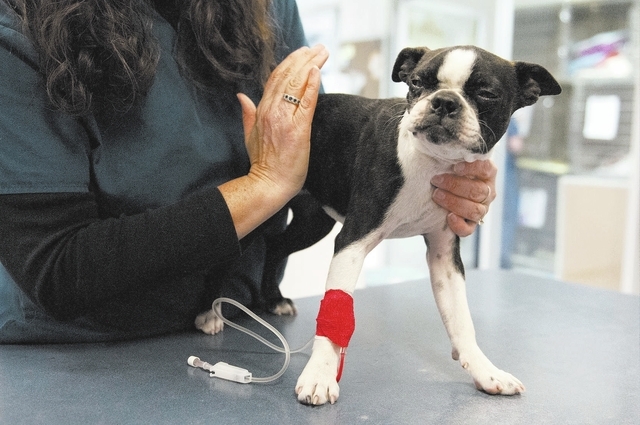
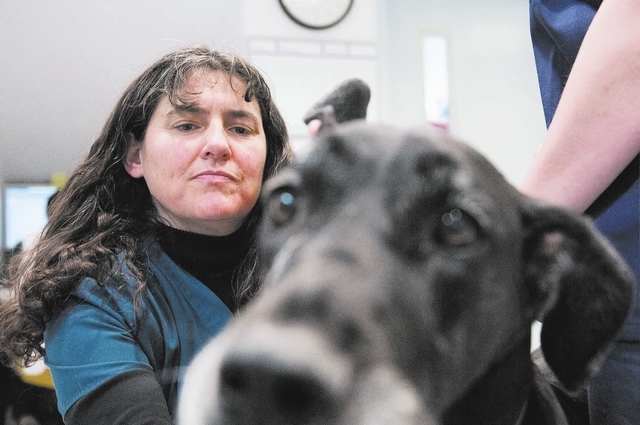

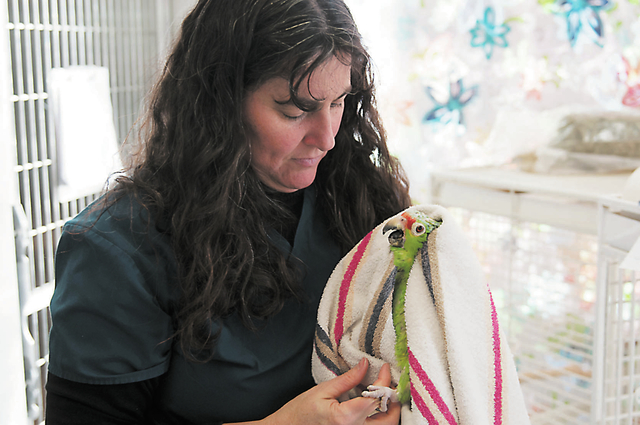
Veterinarian Sharon Gorman, 41, had a hint of the problem while in veterinary medical school.
“It was mild enough that I really thought it was environmental,” she says.
By the time she was about two years out of school and in her own practice, her face would swell up. She was allergic to cats, dogs, rabbits, horses and other animals.
“There was a point when I opened my own clinic and I was working six, seven days a week that my allergies were so bad, my lungs were filling up with fluid,” she says. “It was like I was drowning.”
That was in 1998. Unwilling to give up her career and animal companions at home, Gorman, owner of Creature Comforts Animal Hospital in Las Vegas, has been doing allergy immunotherapy ever since — taking injections of customized extracts of troublesome allergens intended to help her build tolerance.
To achieve her goal more rapidly than usual, she did rush immunotherapy, a radical process that brought her to the brink of anaphylaxis. Epinephrine, Benadryl and a steroid headed off the near-deadly response, right in the office.
Her injections have continued over the years, eventually spacing from weekly to monthly.
The duration of treatment is abnormal in her case, Gorman says, because “I’m literally around animals 24/7.” But, without the life-changing assistance she receives from asthma, allergy and immunology physician Jim Christensen, her work would come to an abrupt halt.
According to asthma, allergy and immunology physician A. Sean McKnight, both the American Academy of Allergy, Asthma and Immunology and the American College of Allergy, Asthma and Immunology recommend staying on the maintenance phase of immunotherapy for a minimum of three years and a maximum of five.
“It is a successful form of treatment,” McKnight says. “I’ve personally been on it myself, as well. It really makes a very big difference in the quality of your life.”
Christensen says that allergies can start early or later in life — and animal allergens are everywhere, often because of the ramblings of people with pets.
Animal dander and saliva can trigger allergies and sometimes asthma, McKnight says. Cat allergen, in particular, is sticky business.
“There are studies showing that even when you take the cat out of the house, six to nine months later you still have significant cat allergen levels in the house,” he says.
Ear, nose and throat physician Susan Schwartz sees patients with allergies, although she says not all who practice her specialty do.
She recommends avoidance of allergens; medications ranging from antihistamines to nasal steroid sprays, along with nasal saline washes; and in some cases, allergy shots. Avoidance can take several forms, she says, whether it’s using special wipes on cats and high-efficiency HEPA filter vacuum cleaners, or keeping furry creatures out of the bedroom.
“There’s no cure for allergies, but if you follow the treatment plan, you’ll notice considerable improvement,” she says. As for many of her patients, “They’ll get rid of me before their dog. So we’ll deal with the problem!”
When Schwartz set out to help patient Olga Lopez, 36, unravel the mystery of nearly a year of sinus infections and problems breathing at night, allergy testing and probing eventually revealed the culprit: Lopez’s 12-pound Chihuahua-Jack Russell mix, T.J. — named after Tijuana, Mexico. Members of Lopez’s family eventually adopted the dog.
“At the end of the day, removing the dog from my house and having my house cleaned and putting me on this medication just pretty much released me,” says Lopez, who is glad to say goodbye to her old companions Mucinex and the Allegra D she once regarded as her “daily vitamin.”
Although many people wanted T.J., she says, “I knew that if I gave him away to a family member, I could go and visit. But it was very difficult. I cried like a baby.”
Dr. David Park, chairman of the department of primary care at Touro University Nevada College of Osteopathic Medicine, concurs with Schwartz that telling patients to give up pets “is very insensitive and can be hurtful to the patient.”
Park’s own cat and dog allergies got in the way of having a pet for his children — until he decided to test a reputedly “hypoallergenic” dog, a poodle mix.
“We’ve had the dog four years now,” he says.
Although McKnight maintains that the existence of hypoallergenic dogs is a “misperception,” he makes other recommendations to patients who want to keep their pets, provided the animals don’t trigger asthma. Among these: Keep pets out of the bedroom. Bathe animals. And minimize or even completely remove carpeted areas, which hold on to allergens.
“Frequently, we recommend going to tile, wood, some form of a solid surface on the floor,” he says. “It’s easier to keep the allergens down if you do that.”
The National Institute of Environmental Health Sciences also recommends dusting often with a damp cloth. In addition, Park tells his patients to vacuum frequently, change and wash clothes after hugging and petting animals, and have a special area just for pets, such as the family room.
But when he has asthmatic patients, especially children, it’s time for a serious conversation, he says.
“You know you’re going to have to make a difficult decision. Either you’re going to seriously consider finding a new home for your pet, or be prepared to make frequent doctor visits or even visits to the emergency department with your child because they have asthma, and asthma can kill. To me, a child is more important than a pet.”
Although allergy immunotherapy offers significant benefit, McKnight says, “it’s probably not a viable option to put a child with cat allergy-triggered breathing issues on shots and still keep the animals in the house.”
Immunotherapy doesn’t normally allow for significant exposure to animals while in the buildup process, he says, because symptoms probably will still erupt.
Moreover, allergy immunotherapy is “not for everyone,” McKnight says. It can trigger asthma, cause hives and worsen eczema. It can even lead to anaphylaxis and death.
“That’s generally when patients aren’t monitored, and they’re doing things they shouldn’t be doing. You want a board-certified allergist monitoring your therapy. Someone (who has) studied the extracts, knows the science behind this, has put together a safe program for you.”
People with significant coronary artery disease or cancer aren’t candidates for the treatment, McKnight says. And he’s cautious with patients taking certain medications.
Like Gorman, veterinarian Nancy Brandt noticed her allergies in veterinary medical school. Having trouble breathing and staying awake led to the diagnosis of her cat allergy.
Chinese medicine helped her alleviate the problem and got her moving in the direction of holistic medicine for pets in her practice at the Natural Care Institute in Las Vegas. She maintains herself with the Chinese approach, homeopathy, aromatherapy, chiropractic and craniosacral therapy — the same things she uses in her clinic.
“To me, allergies are more a state of unhealthiness than they are a state of an immune system, like a program’s wrong,” she says.












